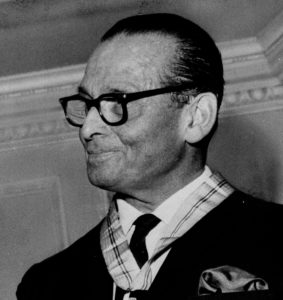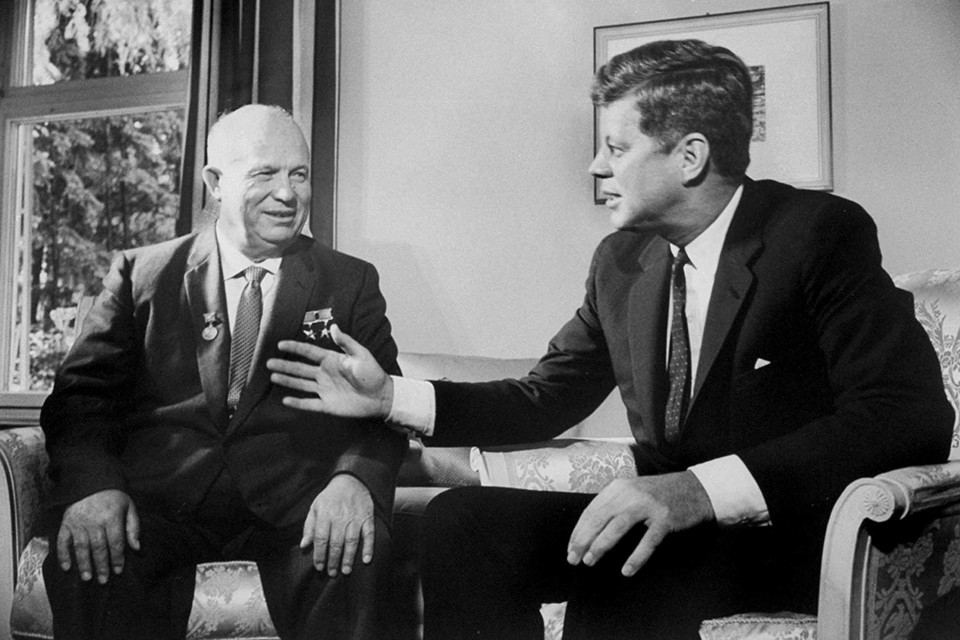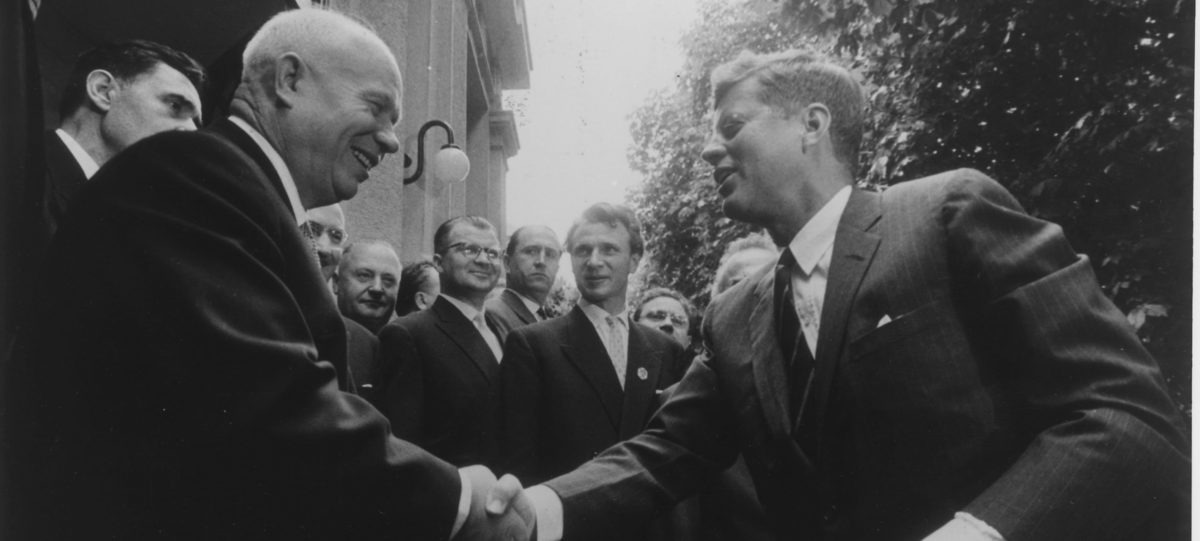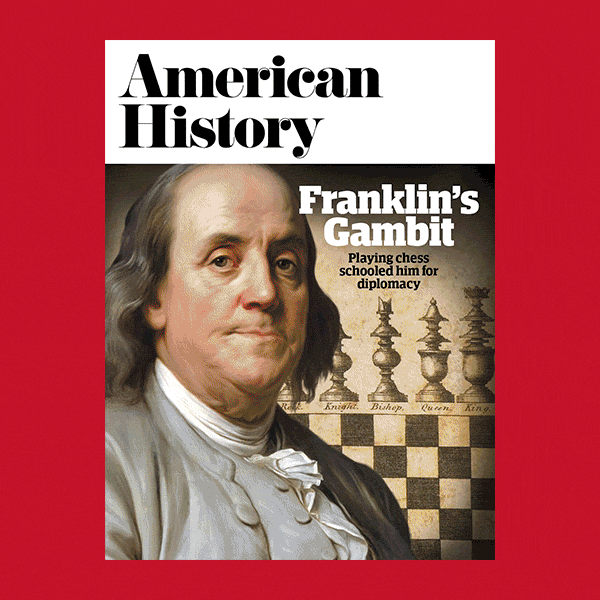The doctor wore a white coat that was frequently splattered with blood. His fingernails were filthy, stained by the chemicals he used to concoct his magic elixirs. He wore thick glasses and spoke in a thick German accent. His office was messy, chaotic, crowded with patients who sometimes waited hours to see him.
In a back room, he mixed up his medicines, sometimes passing the potions over magnets or boiling them in beakers with fluorescent stones. His concoctions contained vitamins, steroids, animal placenta, bone marrow—and a powerful dollop of amphetamines, the drug known on the street as “speed.” He injected these cocktails into hundreds of patients, including some of America’s most famous singers, actors and authors. His shots sent them soaring, flushed with energy, ecstasy and supreme self-confidence—at least for a while.
His name was Max Jacobson but his patients called him “Dr. Feelgood.” He believed so strongly in his medicine that he used it himself. Sometimes it kept him awake for days.

“Max was absolutely a quack,” one of his nurses later told an interviewer. “Max was out of his mind.”
Fifty years ago, in May 1961, President John F. Kennedy asked Max Jacobson to accompany him to Vienna, so the doctor could inject him with his medicine before the young president sat down with Soviet Premier Nikita Khrushchev in their first summit meeting.
Jacobson immediately agreed. A refugee from Hitler’s Germany, he was proud to treat the president of the United States of America. Ten days later, he was at Kennedy’s side, armed with his potions and syringes, when the president prepared to meet Khrushchev.
The story of President Kennedy and Dr. Feelgood is among the most bizarre tales in American history: An ailing president, in great pain, secretly received injections of mind-altering drugs from an eccentric physician at a dangerous moment in the Cold War, when nuclear tensions with the Soviet Union were at their peak. The story remained secret until years after Kennedy’s death, but details slowly emerged in memoirs, government documents and the unpublished autobiography Jacobson wrote before his death in 1979—as well as interviews conducted for this article.
Long before the story leaked out, Jacobson told his favorite patients about his trip to Vienna with JFK. One of those patients was Eddie Fisher, the ’50s pop singer now best remembered for his tempestuous tabloid marriage to Elizabeth Taylor. “Looking back,” Fisher wrote in a memoir, “it’s amazing how we all just accepted the fact that the President was taking Dr. Feelgood with him to a meeting that would affect the entire world.”
“Max was a strange man—loud, arrogant, kind of a mad scientist type,” recalled Chuck Spalding, a New York businessman who consulted Jacobson in 1960, seeking relief from exhaustion. Jacobson promptly gave him a shot. “I went over the top of the building!” Spalding remembered. “I felt wonderful, full of energy, capable of doing just about anything. I didn’t know exactly what he was giving me, but it was a magic potion.”
Spalding touted Jacobson’s magic potion to his friend Jack Kennedy, who was running for president. JFK heard similar stories from another Jacobson patient, Mark Shaw, a Life magazine photographer covering Kennedy’s campaign. Eager for extra energy, Kennedy asked Spalding to set up an appointment. Jacobson agreed to see Kennedy secretly in his Manhattan office one afternoon in September 1960.
Kennedy told the doctor that the grind of campaigning had left him tired and weak, Jacobson wrote in his memoir. He diagnosed the problem as stress and gave Kennedy a shot.
“After his treatment, he told me his muscle weakness had disappeared,” Jacobson wrote. “He felt cool, calm and very alert. I gave him a bottle of vitamin drops to be taken orally, after which he left.”
Jacobson didn’t indicate whether the shot or “vitamin drops” he gave the president contained amphetamines. But he frequently provided his patients—particularly the famous ones—with potions containing the drug.
By 1960, Jacobson was already legendary in showbiz circles, treating Fisher, Cecil B. DeMille, Yul Brynner and other celebrities. Son of a kosher butcher, Jacobson was born in 1900 in Germany, where he earned a medical degree in 1929. After the Nazis seized power, he fled to New York and set up a practice. In the 1950s, he started experimenting with amphetamines as medicine.
He wasn’t alone. The U.S. Air Force used amphetamines to keep pilots awake during the Korean War, and civilian doctors prescribed them as “diet pills” for housewives. Meanwhile, truck drivers used amphetamines to drive all night, and students used them to stay awake to cram for exams. At the time, few users realized that the drug could cause heart problems, paranoia, dependence and other side effects.
Jacobson rarely revealed that amphetamine was his secret ingredient. When patients asked what was in his injections, he’d say, “You’re feeling better, correct? Den zat is all you need to know.” He liked to maintain an aura of mystery. It kept the patients coming back—and brought more patients his way.
Jacobson’s most famous patient—Kennedy—did not come back immediately. But in May 1961, a White House staffer asked Jacobson to fly to Palm Beach, where the first family was vacationing. When Jacobson arrived, the president said he was worried about his wife, who was suffering from postpartum depression after giving birth to their son, John Jr., in November. JFK wondered if she’d be able to accompany him on his upcoming trip to Europe.
“I will be better able to judge after seeing the patient,” Jacobson replied, according to his memoir.
When he met the first lady, “she seemed to be unhappy and complained of a severe migraine,” Jacobson wrote. He gave her a shot and “her mood changed completely.”
Ten days later, Jacobson was summoned to the White House to treat Jacqueline Kennedy again. After receiving an injection, she said, “Jack wants to see you.”
The president was in pain. A few days earlier, he had injured his back at a tree-planting ceremony in Canada. Kennedy had suffered from chronic back pain since 1943, when a Japanese destroyer rammed his boat, PT-109. Now he had re-injured his back, and it hurt so much that White House physician Janet Travell was injecting the anesthetic procaine into it several times a day. That was on top of the corticosteroids—which caused such side effects as anxiety, irritability and insomnia— that Kennedy had been quietly receiving for years to treat a rare chronic endocrine disorder known as Addison’s disease.
In private, JFK was hobbling on crutches. In a week, he would fly to Europe to meet Khrushchev and he didn’t want to appear weak or wounded, particularly after the humiliating defeat at the Bay of Pigs six weeks earlier, when Fidel Castro crushed a CIA-backed invasion of Cuba. “I don’t want to meet Khrushchev as a cripple,” Kennedy told aides. He hoped Dr. Feelgood could help.
Jacobson gave the president an injection—“not only to relieve his local discomfort but to provide him with additional strength to cope with stress.”
Kennedy walked across the room without crutches and said, “I feel very much better.” Then he asked Jacobson to accompany him to the summit.
At New York’s Idlewild airport a week later, Jacobson boarded Air Force One and gave Kennedy an injection. Then he left the president’s plane and, accompanied by his wife, boarded an Air France plane chartered by the White House.
It was “the strangest flight I ever made,” Jacobson wrote. “Nina and I were the only passengers on the plane.”
The first stop was Paris, where Jacobson gave the president an injection before one of Kennedy’s meetings with French President Charles de Gaulle.
The meeting went well. Kennedy charmed de Gaulle, as did Jacqueline. The first lady’s witty conversation in fluent French beguiled de Gaulle. At a formal dinner, JFK joked about his wife’s popularity, playfully introducing himself as “the man who accompanied Jacqueline Kennedy to Paris.”
Paris was a triumph but Vienna loomed, and Kennedy knew that negotiating with Khrushchev could be brutal. The Soviet premier was unpredictable and explosive. A year earlier, he had insulted President Dwight Eisenhower at a summit in Paris, then traveled to the U.N., where he banged his shoe on a desk when a speaker criticized the Soviet Union. For years, Khrushchev had been threatening West Berlin. Now he saw an opportunity to intimidate a young, inexperienced president.
“In the wake of his Cuban failure, the President was on the defensive,” wrote presidential historian Michael Beschloss. And Kennedy was not at his best: His back was killing him. In Paris, Dr. Travell injected him with procaine but it provided only fleeting relief. When Kennedy arrived in Vienna, he summoned Dr. Jacobson.
“Khrushchev is supposed to be on his way over,” the president said. “See to it that my back won’t give me any trouble.”
Jacobson injected Kennedy with his mysterious pick-me-up. It was risky, Beschloss wrote: “Even in small doses, amphetamines cause side effects such as nervousness, garrulousness, impaired judgment, overconfidence, and, when the drug wears off, depression. What if Kennedy should display those qualities in Vienna, when Khrushchev would be scrutinizing every aspect of his behavior, assessing his capacity, mettle and judgment?”

Jacobson’s shot may have helped initially. Reporters described Kennedy “bounding” down the steps to greet Khrushchev. But when the two sat down to talk, the conversation bogged down. For hours, they argued about the merits of communism and capitalism, the causes of Third World revolutions and which of their countries was truly anti-colonialist.
“Kennedy made a mistake,” wrote Charles Bohlen, a veteran American diplomat who attended the meeting. “He let himself be drawn into a semi-ideological discussion involving Marxian theory and the role of colonial powers.”
At the end of the long, frustrating day, JFK’s secretary asked how the meeting went.
“Not too well,” Kennedy replied.
The next day was worse. Khrushchev declared that he intended to sign a treaty with East Germany that would end the Western powers’ right of access to West Berlin. Kennedy replied that the United States would defend West Berlin.
Khrushchev pounded the table. “I want peace,” he said. “But if you want war, that is your problem.”
“It is you, and not I, who wants to force a change,” Kennedy replied.
Khrushchev repeated that he intended to sign the treaty with East Germany by the end of the year.
“If that is true,” the president said unequivocally, “it’s going to be a cold winter.”
So a summit intended to foster peace ended in war threats. Dejected, Kennedy plopped down on a sofa next to New York Times columnist James Reston, and sighed loudly.
“Pretty rough?” Reston asked.
“Roughest thing in my life,” Kennedy replied. “He just beat the hell out of me.”
Back in Moscow, Khrushchev told his cronies that Kennedy was “weak.” “His low estimate of Kennedy’s leadership abilities,” wrote Beschloss, “had more than a little to do with his decision in 1962 to slip nuclear missiles into Cuba.”
Did Jacobson’s amphetamine injections have any effect on the summit? Beschloss says there is “no evidence that Kennedy’s performance was hampered” by the shots. But historian Robert Dallek isn’t so sure. “We cannot discount the impact of the Jacobson chemicals,” Dallek wrote in his JFK biography. “As the day wore on and an injection Jacobson had given him just before he met Khrushchev in the early afternoon wore off, Kennedy may have lost the emotional and physical edge initially provided by the shot.”
Another Kennedy biographer, Barbara Leaming, was more blunt: “Kennedy did himself no favors by facing Khrushchev on speed.”
Despite the debacle in Vienna, Kennedy continued to see Dr. Feelgood. They developed a code to keep the visits secret: When the president wanted to summon Jacobson, a White House staffer called the doctor’s office and left a message from “Mrs. Dunn.”
Jacobson did not charge the president for his services, but he did file expense accounts, and Kennedy biographer Lawrence Leamer used those records to calculate that “in the six months from mid-May to mid-October 1961, Dr. Jacobson spent 36 days with the president…seeing him on average more than once a week.” Secret Service records show that Jacobson visited the White House 34 times in 1961 and 1962. He also treated the president at his homes in Virginia, Hyannis Port, Palm Beach and in Manhattan’s Carlyle Hotel.
“Our relationship was very amicable and informal,” Jacobson wrote. “He enjoyed my Jewish jokes.”
“It was a warm and friendly relationship,” Ruth Jacobson, the doctor’s third wife said in a recent interview with American History. “They had a mutual admiration society going between them.”
In his memoir, Jacobson claimed that he treated Kennedy’s laryngitis with an injection in the throat before the president addressed the United Nations in 1961. That story is not verifiable, but there’s no doubt that Jacobson later met Kennedy in Palm Beach. Photographer Mark Shaw snapped a picture of the two men with Chuck Spalding and Kennedy’s brother-in-law Prince Stanislas Radziwill—both Jacobson patients.
Dr. Feelgood frightened the president’s other physicians. In November 1961, Dr. Eugene Cohen, who treated Kennedy for Addison’s disease, wrote a letter of warning to the president: “You cannot be permitted to receive therapy from irresponsible doctors like M.J., who, by forms of stimulating injections, offers some temporary help to neurotic or mentally ill individuals…this therapy conditions one’s needs almost like a narcotic, [and] is not for responsible individuals who at any split second may have to decide the fate of the universe.”
Dr. Hans Kraus, who was treating the president’s back pain, was equally scathing about Jacobson’s injections: “No President with his finger on the red button has any business taking stuff like that.”
Jacobson realized that he wasn’t popular with the president’s medical staff, and in his memoir he claims that he presented the president with a letter of resignation. “He laughed, tore up the letter and said, ‘That’s out of the question.’”
“Kennedy was not using Dr. Jacobson’s injections as a recreational high but to help him get through his days with demonstrable energy,” wrote Leamer.
No one knows how often JFK took Jacobson’s concoctions or how much amphetamine they contained, so it’s not possible to say for certain how it affected Kennedy’s performance.
“Under controlled circumstance for a short period of time, it might have helped him to enhance his performance. And if he was in pain, he’d be less concerned about the pain because he’s juiced up,” says Dr. Glen Hanson, a professor of pharmacology at the University of Utah and former director of the National Institute on Drug Abuse. But, Hanson adds, prolonged use of amphetamines can cause dependence, even psychosis. “He probably had some physical dependence and my guess is that he probably would have had problems if he tried to go off of it cold turkey. But he died, so we never had that problem.”
Like many Americans, Jacobson learned of Kennedy’s assassination from a TV bulletin. “I was sick and disillusioned,” he wrote. “He was a very dear friend and a great man.”
“Kennedy’s death changed Max,” wrote singer Eddie Fisher. “After that, it seemed like he got more and more out of control.”
Jacobson’s experiments became increasingly bizarre. He boiled his concoctions in beakers containing precious stones. He ran his potions over magnets and attached magnets to the syringes he used. And for some patients, including Fisher, he mixed his own blood into his elixir before injecting it. Of course, his blood contained amphetamines because he was taking his own medicine.
“My father was taking it for good reasons—so he could treat his patients,” says his daughter Jill Jacobson, who is working on a book about his life. “You should have seen his patients. They were all over him. They wrapped themselves around him like snakes. He couldn’t get away from them. That’s why he had to take amphetamines—so he could treat his patients day and night.”
In 1964, Mark Shaw, who was JFK’s photographer and Jacobson’s patient, published The John F. Kennedys: A Family Album, a book of candid photos of the first family. Shaw dedicated it to “my friend and companion Dr. Max Jacobson.” Five years later, Shaw died at 47 from what a coroner called “intravenous amphetamine poisoning.”
In 1972, New York Times reporter Boyce Rensberger began investigating Jacobson. He interviewed many patients, and some, including Congressman Claude Pepper, praised the doctor. But film director Otto Preminger said that Jacobson’s shots “made me feel terrible” and author Truman Capote said that when he stopped taking Jacobson’s medicine, he collapsed and had to be hospitalized. Jacqueline Kennedy Onassis declined to be interviewed for Rensberger’s story, but she confirmed that Jacobson had treated her and President Kennedy.
One patient Rensberger spoke with said that Jacobson wore one of the PT-109 tie clips that Kennedy gave to his friends, and told her: “Do you know where I got this? I worked with the Kennedys. I traveled with the Kennedys. Jack Kennedy, Jacqueline. They never could have made it without me. They gave me this in gratitude.”
Rensberger visited Jacobson’s office. “It was a mess,” he recalls. The lab was filthy, with boxes piled haphazardly and bottles containing glowing stones. “He’d shake a bottle and a rock would clink around and he’d say, ‘You know what that is? That’s uranium! It gives energy to the medicine.’”
Rensberger interviewed Jacobson at his modest Manhattan apartment, and the doctor freely admitted that his medicine contained amphetamines—and that he used it himself. “Amphetamine is not an addictive drug,” he insisted. Rensberger concluded that Jacobson truly believed in his elixirs: “He believed that he was a bold pioneer and he was doing good things.”
In the middle of the interview, Rensberger recalls, Jacobson seemed a little stressed. He excused himself, and went into the bathroom, where he remained for quite a while. When he returned and sat down, Rensberger noticed a little drop of blood atop a vein on the back of the doctor’s left hand.
“I can’t prove it but I think he shot himself up,” Rensberger says. “Afterwards he was friendlier. He was all upbeat again.”
The Times published Rensberger’s story on its front page on December 4, 1972: “Amphetamines Used by a Physician to Lift Moods of Famous Patients.” Soon, the New York medical board began investigating Jacobson. It found that the doctor had purchased at least 29.7 pounds of amphetamines in five years—enough for more than 100,000 doses a year. It also found that his speed-spiked “vitamin shots” contained “filthy, putrid and/or decomposed substances.”
In 1975, New York revoked Jacobson’s medical license.
In 1979, the ex-doctor applied to have his license restored but his plea was rejected. He died a few months later, at the age of 79.
“It’s been 40 years since Max died, and to me it’s like it was yesterday,” his widow, Ruth Jacobson, said in a recent interview. “He was a great man and a fantastic doctor. I wish I had him now. I could use a good doctor.”
Peter Carlson is American History’s articles editor.






